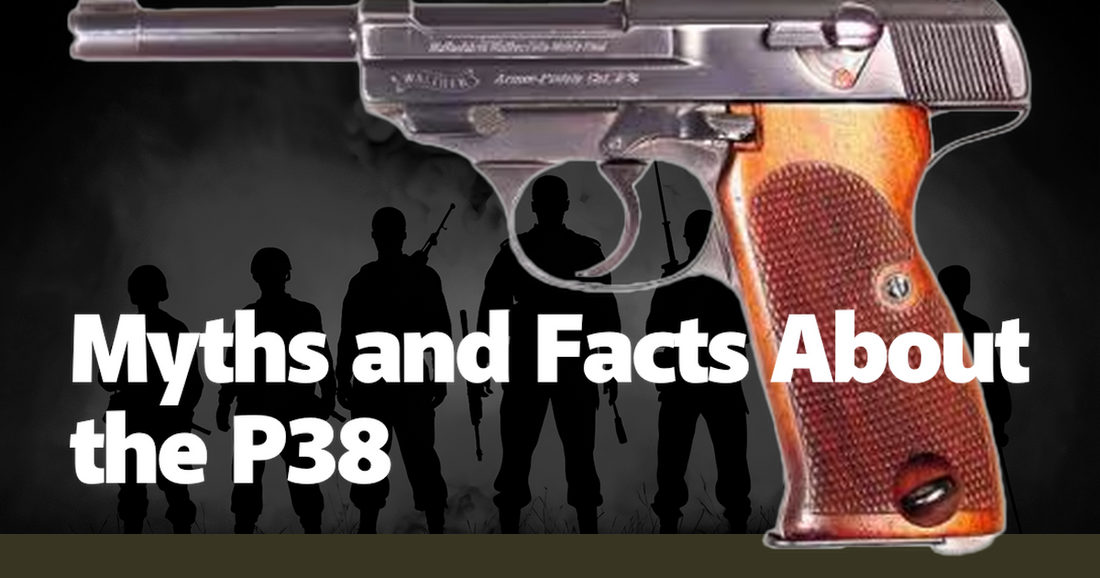The Walther P38, a semi-automatic pistol developed by the German arms manufacturer Carl Walther GmbH, has long been shrouded in a mix of myth and fact. Originally designed during the late 1930s, the P38 was intended to replace the aging Luger P08 as the standard service pistol for the Wehrmacht. Its introduction marked a significant shift in firearm design, emphasizing reliability and ease of production. However, the P38's reputation has often been clouded by both exaggerated myths and overlooked facts, making it a fascinating subject for military historians and firearm enthusiasts alike.
One of the most persistent myths about the P38 is that it was a "super weapon" of the German military, akin to the infamous Tiger tanks or the V-2 rockets. While the P38 was indeed advanced for its time, it was not a game-changer on the battlefield. The P38's design featured a double-action trigger, a decocking lever, and a locked-breech mechanism, all of which contributed to its reliability and ease of use. These features were innovative, but they did not make the P38 a revolutionary weapon. In reality, the P38 was simply a well-designed, reliable service pistol that performed its intended role effectively but did not dramatically alter the course of the war.
Anecdotes from soldiers who used the P38 provide a more nuanced view of its performance. For instance, accounts from the Eastern Front reveal that the P38 was highly valued for its robustness in harsh conditions. Unlike the Luger P08, which was prone to jamming in the mud and freezing cold, the P38's simpler design allowed it to function more reliably. A German soldier, recalling his experience during the bitter winter of 1942, noted that his P38 continued to fire accurately even when other weapons failed. Such stories underscore the practical advantages of the P38, which were rooted in its engineering rather than any mythical superlative qualities.
Another myth that has persisted is the notion that the P38 was exclusively a German weapon, used only by the Wehrmacht and SS units. In truth, the P38 saw service with a variety of forces during and after World War II. After the war, many P38s were captured and used by Allied forces, including the French and the Soviets. The French even produced their own version of the P38, known as the P1, which remained in service for several decades. Additionally, the P38 influenced post-war pistol designs, including the Beretta 92 and the SIG P210, demonstrating its lasting impact on firearm development.
The P38's role in covert operations also adds a layer of intrigue to its history. During World War II, the pistol was used by German intelligence operatives and resistance fighters alike. One notable example is the story of Operation Valkyrie, the failed plot to assassinate Adolf Hitler. Several conspirators carried P38s, intending to use them if the initial bomb attack did not succeed. While the plot ultimately failed, the presence of the P38 in such a high-stakes operation highlights its reliability and the trust placed in it by those who wielded it.
Despite its many virtues, the P38 was not without its flaws. Early models suffered from issues related to the locking block, which could crack under prolonged use. These problems were addressed in later versions, but they nonetheless marred the P38's reputation among some users. Additionally, the pistol's relatively complex manufacturing process meant that it was not as easy to produce in large quantities as initially hoped. This led to a situation where both the P38 and the older Luger P08 were used concurrently throughout the war, rather than the P38 fully replacing its predecessor.
The P38's post-war legacy is equally compelling. The pistol continued to be produced and used by various military and police forces around the world well into the latter half of the 20th century. In the United States, returning GIs brought home P38s as war trophies, sparking interest among American collectors and shooters. The P38's design also influenced the development of several post-war pistols, cementing its place in the annals of firearm history. Today, the P38 is considered a classic, with vintage models fetching high prices among collectors.
In conclusion, the Walther P38 is a firearm that embodies both myth and fact. While it was not the revolutionary weapon that some myths suggest, it was nonetheless a significant advancement in pistol design, offering reliability and ease of use that were highly valued by those who carried it. The P38's service history, spanning from the battlefields of World War II to post-war police forces, attests to its enduring utility and influence. By separating the myths from the facts, we can gain a clearer understanding of the P38's true place in military history, appreciating it not as a super weapon, but as a well-crafted tool that served its purpose admirably.

